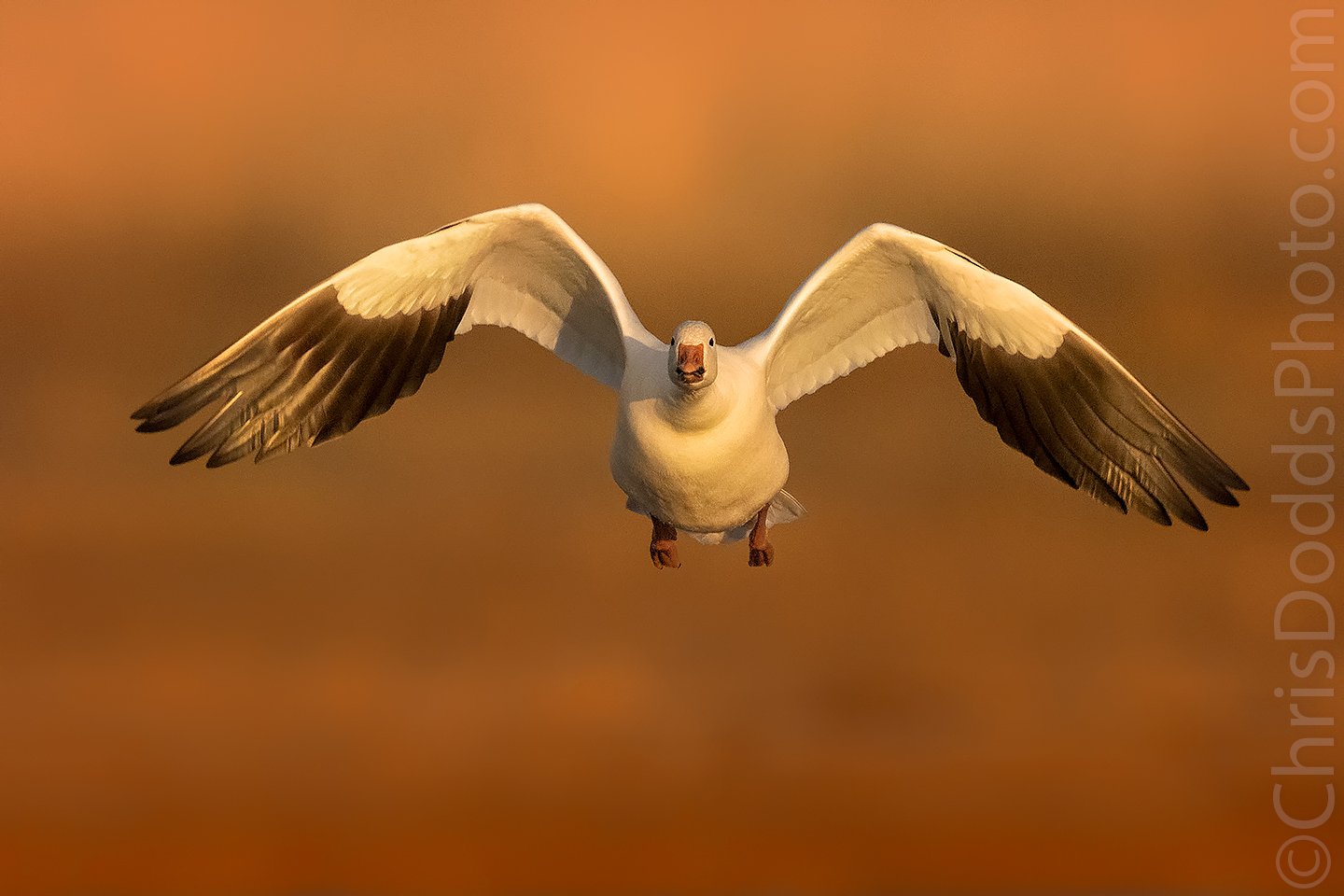A Blue Goose (Dark morph Snow Goose) offers a ventral view as it banks vertically to lose altitude rapidly while descending into a corn field during my Better than Bosque Workshop in New Mexico.
Snow Goose (Blue morph) Banking (Chen Caerulescens, Oie des Neiges forme bleu, SNGO) from my Better than Bosque workshop. Near Bosque del Apache National Wildlife Refuge, San Antonio, New Mexico, USA. Image Copyright ©Christopher Dodds. Sony Alpha alpha 1 Mirrorless camera & Sony FE 600mm f/4 G Master OSS Lens with Sony FE 2X Teleconverter @1,200mm ISO 1,000, f/8 @ 1/5,000s Manual exposure.












